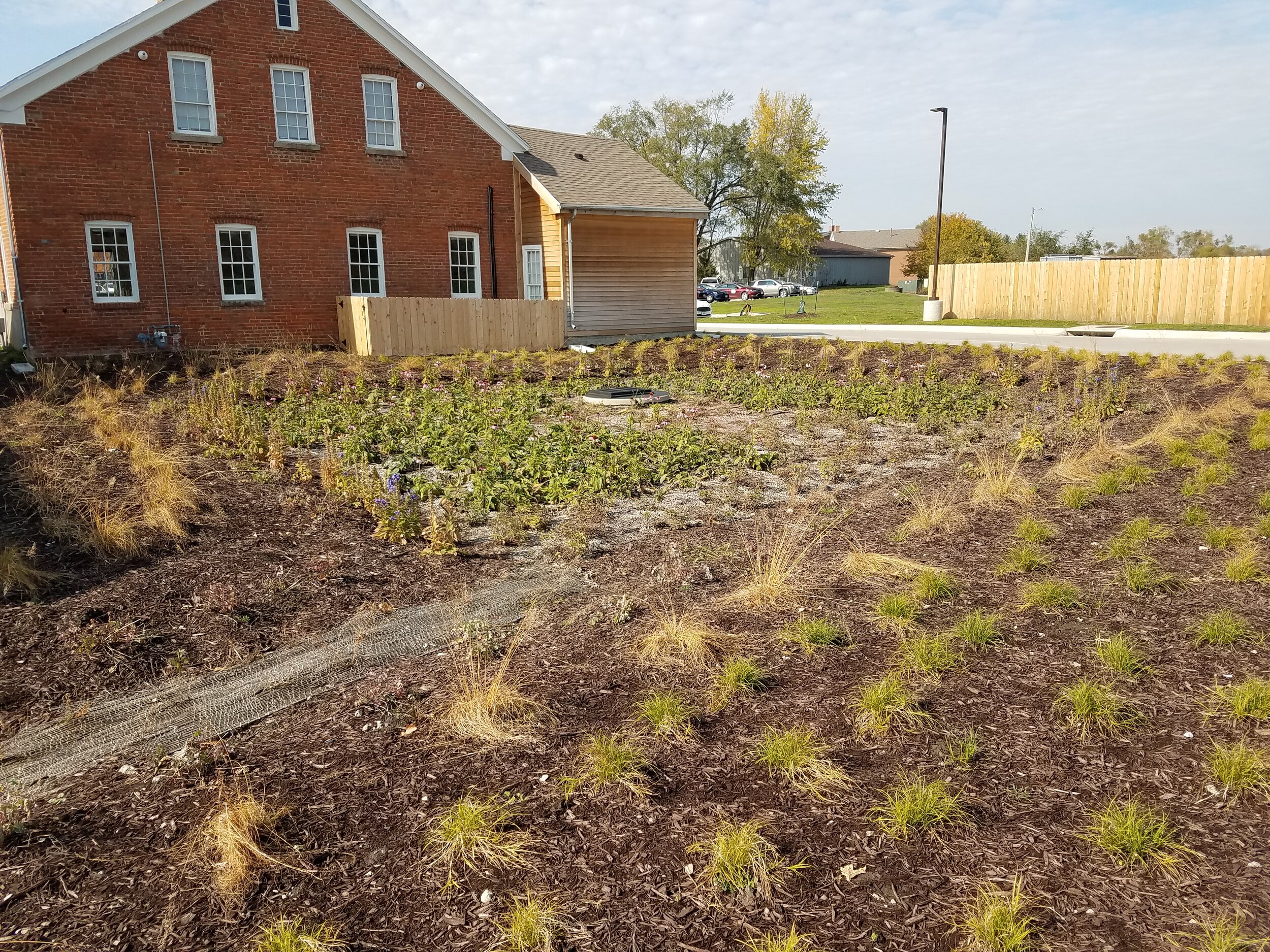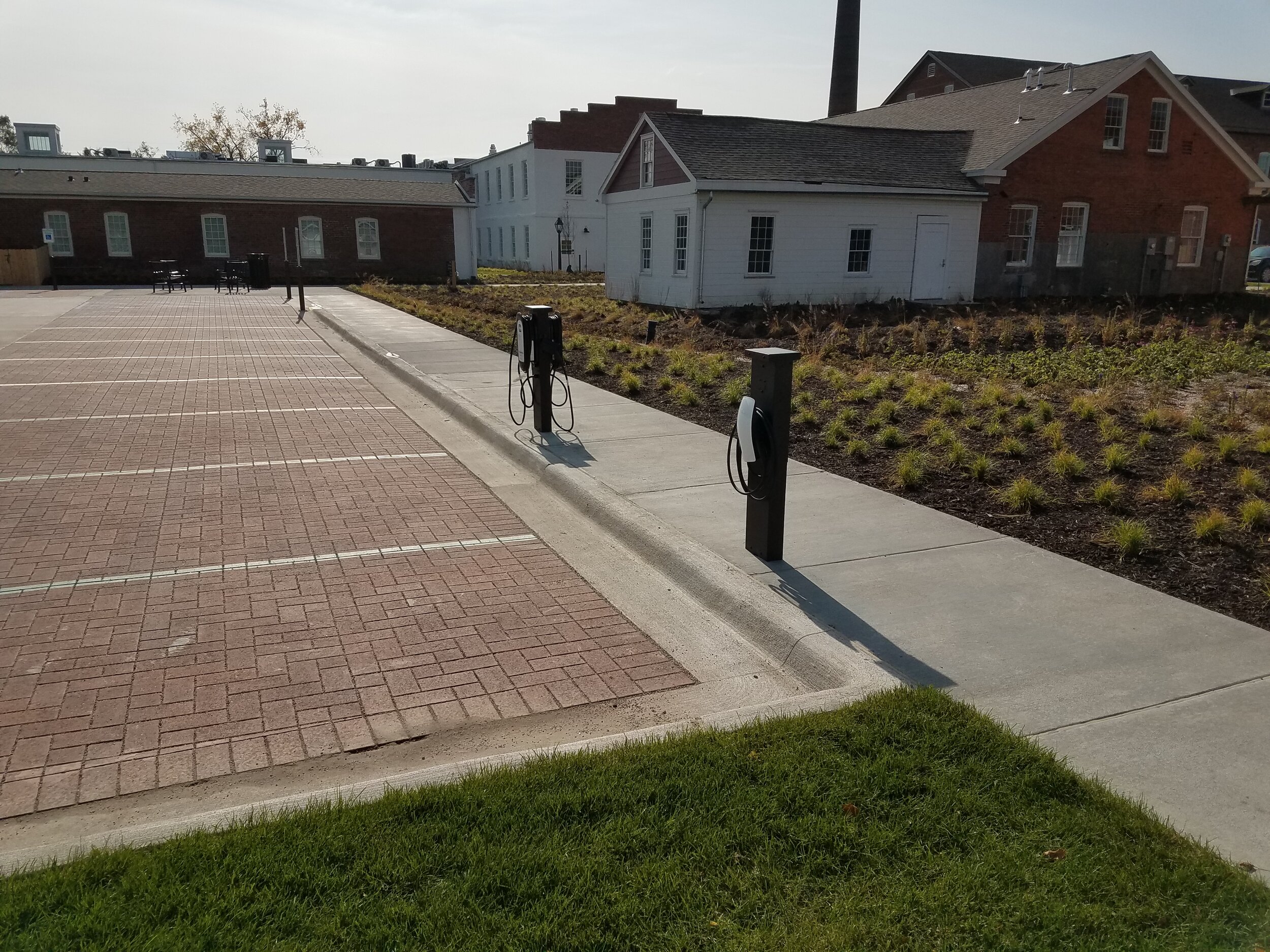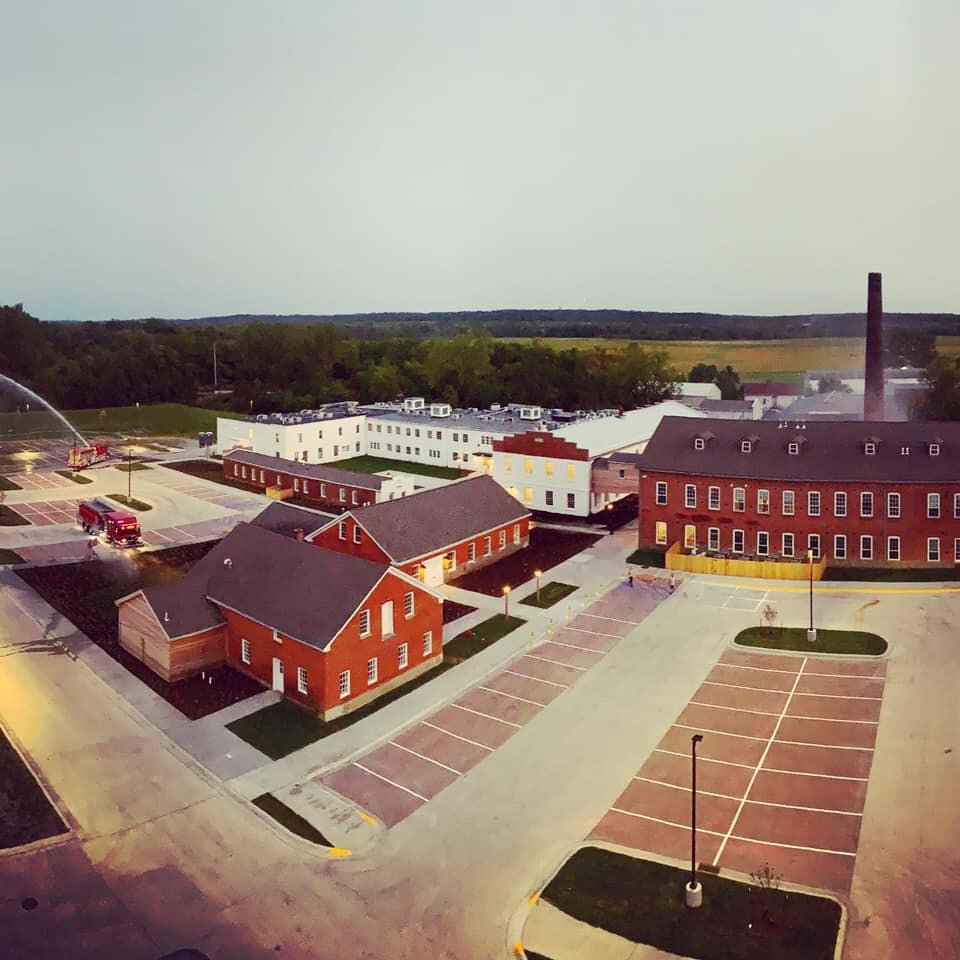Hotel Millwright Campus Urban Conservation Project
The Hotel Millwright, a boutique hotel and event center in the Amana Colonies, received IDALS Water Quality Initiative funding to install permeable pavers, a bioretention cell, and native landscaping along major walkways to treat the majority of stormwater entering Price Creek and the Iowa River from their 8-acre facility. The hotel partnered with the Iowa Valley Resource Conservation & Development, the Iowa Soil & Water Conservation District, and Trees Forever on the project. This project was recognized as the Urban Watershed Development of the Year at the 2021 Iowa Water Conference for the hotel’s commitment to protecting and improving local water quality. This recognition, along with the hotel hosting multiple events throughout the year, will expose visitors from all around the country to these innovative practices as they pull off Interstate 80.
Rose Danaher, Middle Cedar Watershed Coordinator, commented on the project: “The team at Hotel Millwright had sustainability in mind from the very beginning. As they repurposed the historic buildings, it quickly became clear that incorporating conservation practices into the project was a priority. Today permeable pavers, native landscaping and a bioretention cell treat the majority of the runoff from the hotel complex, improving water quality in both Price Creek and the historic Mill Race. Signage about these practices will educate thousands of visitors about how they can add water quality practices to their homes or businesses.”
Jeff Popenhagen with The Amana Society, Inc., added, “We were so grateful to work with the Iowa Department of Agriculture and Land Stewardship. We learned so much. The WQI Urban Conservation project fits perfectly with our mission to build a more sustainable complex. Sharing the practices of permeable pavers, native plantings, and a bio-retention cell with visitors and guests to Hotel Millwright has been great. People appreciate the commitment and are shocked at the effectiveness of the practices in a relatively small footprint. We are incredibly proud of how the complex turned out visually and the conservation practices added to the beauty—what a win-win for our community and our project.”



